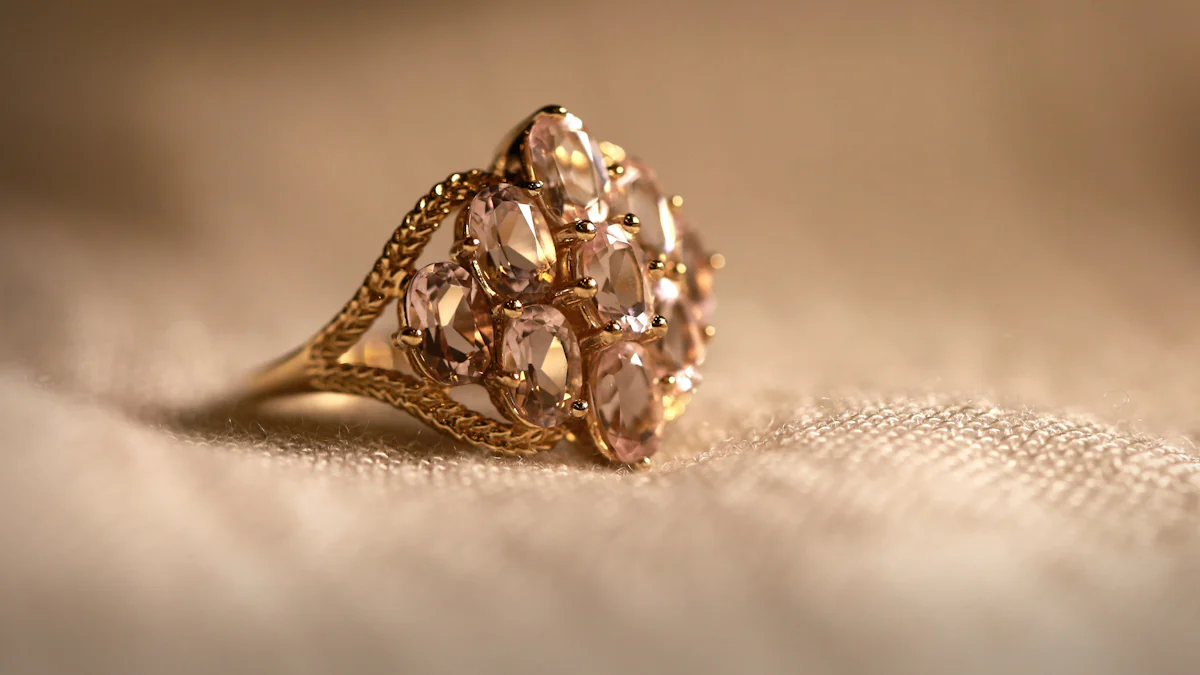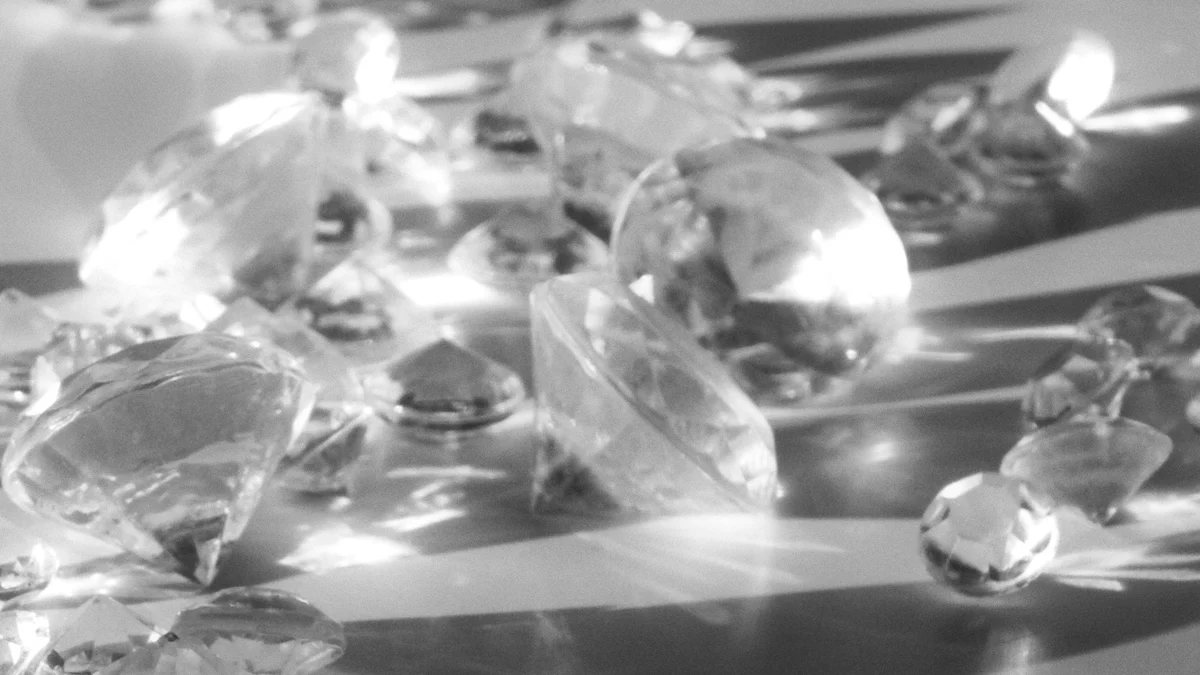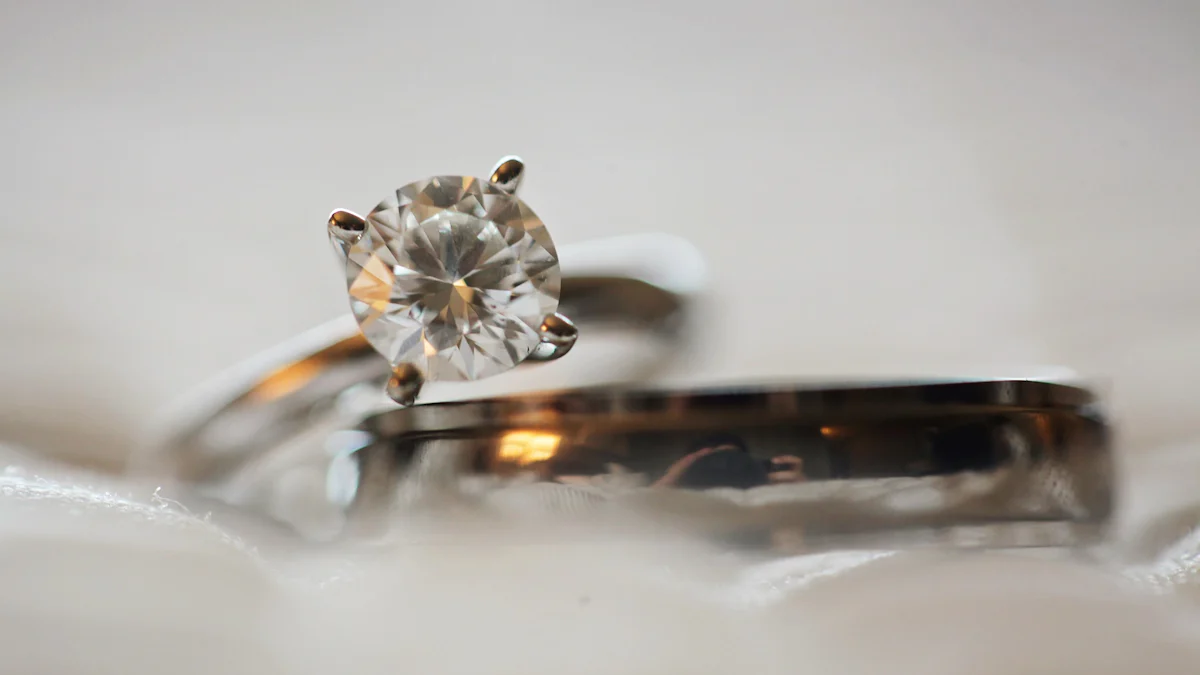Why Are Diamonds Expensive in 2024?

In 2024, you might wonder why are diamonds expensive. The answer lies in a mix of limited supply and changing consumer demand. Global diamond production remains volatile, with levels still below pre-pandemic highs. Meanwhile, demand from countries like China and India continues to rise, shaping the market significantly. As the diamond market grows, reaching an estimated USD 97.57 billion in 2024, these factors contribute to the high prices you see today. Understanding these dynamics helps you grasp the reasons behind the cost of these precious stones.
Key Takeaways
- Limited supply due to a decline in new diamond discoveries and strict environmental regulations drives up diamond prices.
- Geopolitical tensions, such as trade restrictions and political instability, create supply shortages that further increase costs.
- Rising affluence in emerging markets like China and India boosts demand for diamonds, contributing to their high prices.
- The enduring popularity of diamond jewelry, especially for significant life events, keeps demand steady and prices elevated.
- Lab-grown diamonds offer a more affordable and ethical alternative, but the rarity of natural diamonds maintains their high value.
- Currency fluctuations and global economic conditions, including inflation, significantly impact diamond pricing and purchasing power.
- Staying informed about market dynamics can help you make savvy purchasing decisions when buying diamonds.
Supply Dynamics

Mining Activities
Decline in New Discoveries
You might wonder why diamonds remain expensive in 2024. One reason is the decline in new diamond discoveries. Mining companies have struggled to find new diamond-rich areas. This scarcity increases the value of existing diamonds. As fewer new mines open, the supply of natural diamonds decreases. This limited supply contributes to higher prices.
Environmental Regulations
Environmental regulations also play a role in diamond pricing. Governments worldwide enforce strict rules to protect the environment. These regulations make mining operations more costly and complex. Companies must invest in eco-friendly technologies and practices. This investment raises production costs, which in turn affects diamond prices. You see these costs reflected in the price tags of diamonds.
Geopolitical Influences
Trade Restrictions
Geopolitical tensions significantly impact diamond prices. For instance, sanctions on Russian diamond producers have created supply shortages. Russia ranks among the largest diamond producers globally. Restrictions on its exports lead to fewer diamonds in the market. This scarcity drives up prices, affecting what you pay for diamonds.
Political Instability in Key Regions
Political instability in key diamond-producing regions further complicates supply dynamics. Conflicts and unrest disrupt mining activities. These disruptions reduce the availability of diamonds. When supply cannot meet demand, prices rise. You experience these effects when purchasing diamonds, as geopolitical factors influence their cost.
Demand Factors

Consumer Trends
Rising Affluence in Emerging Markets
You might notice that as economies in emerging markets grow, more people can afford luxury items like diamonds. Countries such as China and India have seen significant economic growth. This growth leads to a rise in disposable income among their populations. As a result, more consumers in these regions are purchasing diamonds, driving up demand. When demand increases, prices often follow suit. This trend is one reason why diamonds remain expensive in 2024.
Continued Popularity of Diamond Jewelry
Diamond jewelry continues to hold a special place in many cultures and traditions. You see diamonds featured prominently in engagement rings, wedding bands, and other significant gifts. This enduring popularity keeps demand steady. Even as new trends emerge, the classic appeal of diamond jewelry persists. The consistent demand for these timeless pieces contributes to their high cost.
Impact of Lab-Grown Diamonds
Market Share and Consumer Perception
Lab-grown diamonds have gained traction in recent years. Many consumers now view them as a viable alternative to natural diamonds. These diamonds offer an ethical and sustainable choice, appealing to environmentally conscious buyers. A survey highlights that the growing consumer demand for ethical products drives this market. As awareness of environmental impact and labor practices increases, more people favor lab-grown options. This shift in perception influences the diamond market dynamics.
Price Comparison with Natural Diamonds
Lab-grown diamonds typically cost less than natural ones. You might find this price difference appealing if you're budget-conscious. However, the lower cost of lab-grown diamonds doesn't diminish the value of natural diamonds. The rarity and traditional allure of natural diamonds maintain their high price. This price comparison highlights why diamonds, especially natural ones, remain expensive in 2024.
Economic Conditions
Currency Fluctuations
Impact of a Strong Dollar
You might notice that currency fluctuations play a significant role in diamond pricing. A strong U.S. dollar can make diamonds more expensive for international buyers. When the dollar strengthens, it increases the cost of diamonds for those purchasing with other currencies. This situation often leads to reduced demand from international markets, which can drive prices down. However, for U.S. buyers, a strong dollar might mean more stable prices domestically.
Exchange Rate Volatility
Exchange rate volatility also affects diamond prices. When exchange rates fluctuate, it creates uncertainty in the market. This uncertainty can lead to price adjustments as sellers try to maintain profitability. You might find that during periods of high volatility, diamond prices can change rapidly. Keeping an eye on these fluctuations can help you make informed decisions when purchasing diamonds.
Global Economic Health
Inflation and Purchasing Power
Inflation impacts your purchasing power and the diamond market. High inflation decreases the value of currency, which can lower diamond prices in real terms. During such times, you might find better deals on diamonds. However, inflation also affects production costs, which can lead to price increases. Understanding inflation trends helps you navigate the diamond market effectively.
Economic Recovery Post-Pandemic
The global economy's recovery post-pandemic influences diamond prices. As economies stabilize, consumer confidence grows, leading to increased demand for luxury items like diamonds. This demand can drive prices up. However, economic uncertainties still linger, affecting market stability. By staying informed about economic conditions, you can better understand why diamonds are expensive in 2024 and make savvy purchasing decisions.
In 2024, understanding why are diamonds expensive involves examining several key factors. Limited supply due to reduced mining activities and geopolitical influences plays a significant role. Meanwhile, robust demand from emerging markets and the enduring appeal of diamond jewelry drive prices upward. Economic conditions, such as currency fluctuations and global economic health, further complicate the pricing landscape. By grasping these dynamics, you can make informed decisions when purchasing diamonds, ensuring you understand the value and cost of these precious stones.
FAQ
What makes diamonds so expensive in 2024?
Diamonds remain costly due to limited supply and high demand. Mining challenges and geopolitical issues restrict supply. Meanwhile, rising affluence in emerging markets boosts demand. These factors together drive up prices.
How do environmental regulations affect diamond prices?
Strict environmental regulations increase mining costs. Companies must invest in eco-friendly technologies. These added expenses raise production costs, which reflect in higher diamond prices.
Are lab-grown diamonds a good alternative?
Lab-grown diamonds offer a more affordable and ethical choice. They appeal to environmentally conscious buyers. While cheaper, they don't diminish the value of natural diamonds. You can consider them if you're budget-conscious.
How do currency fluctuations impact diamond prices?
Currency fluctuations affect international diamond pricing. A strong U.S. dollar makes diamonds pricier for foreign buyers. Exchange rate volatility can lead to rapid price changes. Staying informed helps you make better purchasing decisions.
Why is there a decline in new diamond discoveries?
Mining companies face challenges in finding new diamond-rich areas. This scarcity increases the value of existing diamonds. Fewer new mines mean a reduced supply, contributing to higher prices.
How does political instability influence diamond costs?
Political instability disrupts mining activities in key regions. Conflicts reduce diamond availability. When supply can't meet demand, prices rise. Geopolitical factors significantly impact what you pay for diamonds.
What should I consider when buying a diamond in 2024?
Focus on the 4 Cs: Cut, Color, Clarity, and Carat. These factors determine a diamond's quality and price. Our diamond buying guide simplifies the process, offering tips for both in-store and online purchases.
How does inflation affect diamond prices?
Inflation impacts your purchasing power and diamond costs. High inflation can lower diamond prices in real terms. However, it also raises production costs, potentially increasing prices. Understanding inflation trends aids in navigating the market.
Is diamond jewelry still popular?
Yes, diamond jewelry remains popular across cultures. Engagement rings and wedding bands often feature diamonds. This enduring appeal keeps demand steady, contributing to their high cost.
How does the global economy's recovery post-pandemic affect diamond prices?
Economic recovery boosts consumer confidence, increasing demand for luxury items like diamonds. This demand can drive prices up. However, lingering uncertainties affect market stability. Staying informed about economic conditions helps you understand diamond pricing dynamics.
See Also
Do Lab Grown Diamonds Cost Less Than Natural Ones?
Comparing Prices of All Around Diamond Rings
Key Elements Influencing Diamond Ring Price Explained

